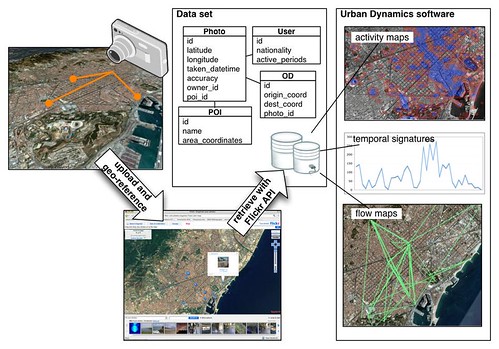Accepted: Leveraging Explicitly Disclosed Location Information to Understand Tourist Dynamics: A Case Study
Posted: April 16th, 2008 | 1 Comment »My paper “Leveraging Explicitly Disclosed Location Information to Understand Tourist Dynamics: A Case Study”, co-authored with Josep Blat, Filippo Dal Fiore and Carlo Ratti, has been accepted for publication in the Journal of Location Based Services. The abstract goes as follows:
In recent years, the large deployment of mobile devices has led to a massive increase in the volume of records of where people have been and when they were there. The analysis of these spatio-temporal data can supply high-level human behavior information valuable to urban planners, local authorities, and designer of location-based services. In this paper, we describe our approach to collect and analyze the history of physical presence of tourists from the digital footprints they publicly disclose on the web. Our work takes place in the Province of Florence in Italy, where the insights on the visitors’ flows and on the nationalities of the tourists who do not sleep in town has been limited to information from survey-based hotel and museums frequentation. In fact, most local authorities in the world must face this dearth of data on tourist dynamics. In this case study, we used a corpus of geographically referenced photos taken in the province by 4280 photographers over a period of 2 years. Based on the disclosure of the location of the photos, we design geovisualizations to reveal the tourist concentration and spatio-temporal flows. Our initial results provide insights on the density of tourists, the points of interests they visit as well as the most common trajectories they follow.
The reviews validate the direction of my theis. They ask me to explore how the insights insight gained from this project can be transferred to other user groups and compare the outcome with the available tourist services. They propose to continue exploring the issues around the quality of the data (i.e. how to reduce the uncerntainty in a bit detailed manner). Finally, I make a case that the visualization validate my hypothesis, but I could also point out the anomalies or unexpected behavior patterns (journalists somehow requested similar outcomes). And, yeah, not to forget the encouraging comment… “This is an excellent paper, covering a very timely and interesting topic“.

Data flow, from data recording, retrieving, storing to the visualizations.


Well, congrats! How did your talk go?